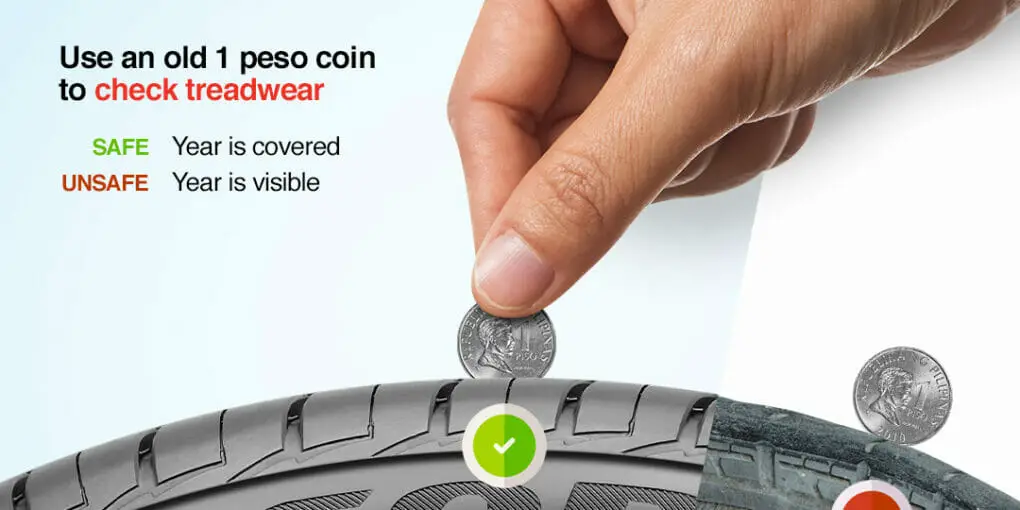How to Evaluate Car Tires
If your car has been making strange noises, vibrating, or just not handling like it used to, it may be time to check the condition of your tires. Here are a few tips on how to evaluate car tires.First, take a close look at the treads.
Are they bald in spots or completely smooth? If so, it’s definitely time for new tires. Even if the treads aren’t totally worn down, if they are significantly shallow, that can also affect performance.
Next, check for any cracks or splits in the sidewalls. These can weaken the structure of the tire and cause a blowout while you’re driving. If you see any damage at all, err on the side of caution and replace the tire.
Finally, take a look at the general condition of the tire – is it dry rot? If so, that means the rubber has degraded and is no longer as strong as it should be. Dry rot is common in older tires that haven’t been properly maintained.
If you’re not sure how to evaluate car tires yourself, always consult with a professional before making any decisions about replacement.
- Check the tread depth of the tires
- The tread depth should be at least 1/16 of an inch
- Inspect the condition of the tires
- Look for any cracks, cuts, or other damage
- Check the air pressure in each tire and inflate to the recommended level if necessary
- Have a professional evaluate the tires if you are unsure about their condition or have any concerns
LEARN How to MEASURE Tire Life
How Do You Check the Quality of a Tire?
When you are shopping for tires, it is important to make sure that you are getting a good quality product. There are a few things that you can look for when you are checking the quality of a tire.One thing that you can do is look at the tread pattern on the tire.
A good quality tire will have a deep tread pattern with thick treads. This will help to provide good traction on the road and will also help to resist wear and tear.Another thing to look for is the sidewall of the tire.
A good quality tire will have a thick sidewall that is made from durable material. This will help to protect the rim of your wheel and will also provide a smoother ride.Finally, you should check the warranty that comes with the tire.
A good quality tire should have a long warranty period so that you can be confident in its performance.
How Do You Evaluate Tire Tread?
When it comes to evaluating tire tread, there are a few different factors that you need to take into account. First and foremost, you need to check the depth of the tread. This can be done with a simple ruler or measuring tape.
The general rule of thumb is that your tires should have at least 1/16 of an inch of tread remaining. Anything less than that and you’re at risk for decreased traction and increased wear and tear on your tires.Another important factor to consider is the pattern of the tread.
Many tires have what’s known as a “treadwear indicator.” This is a raised area in the center of the tire that wears down first. As it wears down, it will eventually reach the level of the rest of the tire surface.
At this point, it’s time to start shopping for new tires.Finally, take a look at how evenly worn your tread is. Uneven wear can be indicative of problems with your alignment or suspension.
It can also simply mean that one side of your car sees more road than the other (if you live in an area with lots of twists and turns, for example). In any case, uneven wear means shortened tire life so it’s something you’ll want to keep an eye on.By following these simple tips, you can make sure that your tires are always in good condition – and that they last as long as possible!
What 3 Things are You Looking for When You Check Your Tires?
When you check your tires, you should be looking for three things in particular: tread depth, tire pressure, and signs of wear and tear.Tread depth is important because it affects how well your tires grip the road. The deeper the tread, the better they will grip in wet or icy conditions.
Tire pressure is important because it affects how your tires perform. If they are underinflated, they will not perform as well and may even overheat. Signs of wear and tear include cracks in the sidewall, bulges, or bald spots.
These can all lead to a blowout if not addressed.

Credit: www.bridgestoneamericas.com
How to Check Tire Tread With a Quarter
It’s important to regularly check your tire tread depth to ensure safe driving conditions. Tire tread depth is the measure of the grooves in your tires and helps prevent hydroplaning, among other things. The recommended minimum tread depth is 4/32 of an inch, and you can check this with a simple quarter test.
Here’s how it works: insert a quarter into the tread groove of your tire at various points around the circumference of the tire. If you can see all of Washington’s head, then your tread depth is less than 4/32 of an inch and it’s time to replace your tires. If part of Washington’s head is always covered by the tire tread, then you have enough tread depth for safe driving conditions.
How to Check Tire Tread With a Gauge
Tire tread is important for traction, especially in wet or icy conditions. It’s also a good indicator of how long the tire will last. Here’s how to check your tire tread depth with a gauge.
First, find a place on the tire where the tread is deepest. Place the end of the gauge at the bottom of the tread groove and press it firmly into place. Then, read the number on the gauge that lines up with the edge of the tire.
This is your tire tread depth.Most passenger car tires have a minimum tread depth of 6/32″. That means that if your tire has less than 6/32″ of tread remaining, it’s time to replace it. You can use this same method to measure the tread depth on all four tires and compare them to see if any are getting close to needing replacement.
If you don’t have a Tire Tread Depth Gauge handy, there’s another way to check your tires. Take a penny and insert it headfirst into the lowest part of the tread groove. If you can see all of Lincoln’s head, then your tread depth is less than 2/32″, which means it’s time for new tires!
How to Measure Tread Depth Without a Gauge
If you’re a car enthusiast, then you know that one of the most important aspects of maintaining your vehicle is making sure that your tires are in good condition. This means regularly checking the tread depth and replacing your tires when necessary.But what if you don’t have a tread depth gauge?
There are actually a few different ways that you can measure tread depth without a gauge. One option is to use a penny. Place the penny into the deepest part of the tread groove with Lincoln’s head facing down.
If any part of his head is visible, then your tread depth is less than 2/32″.Another option is to use a ruler or tape measure. Simply insert the ruler into the tread groove and measure from the bottom of the tread to the top of the tire.
Once again, if there is any gap between the two, then your tread depth is less than 2/32″.Of course, these methods are not as accurate as using a proper tread depth gauge, but they will still give you a good idea of whether or not your tires need to be replaced. So next time you’re at home and realize you don’t have a gauge on hand, don’t worry – there are still ways to check your tire’s tread depth!
Conclusion
When it comes to car tires, there are a few things you’ll want to keep in mind in order to make sure you’re getting the most out of them. For starters, pay attention to the tread depth. You can use a penny to check this – if the tread doesn’t reach past Lincoln’s head, it’s time for new tires.
Additionally, take note of any cracks or bulges in the tire – these could lead to a blowout down the road. Finally, make sure that the tires are properly inflated – underinflated tires will decrease your gas mileage and put unnecessary wear on the tire itself.


